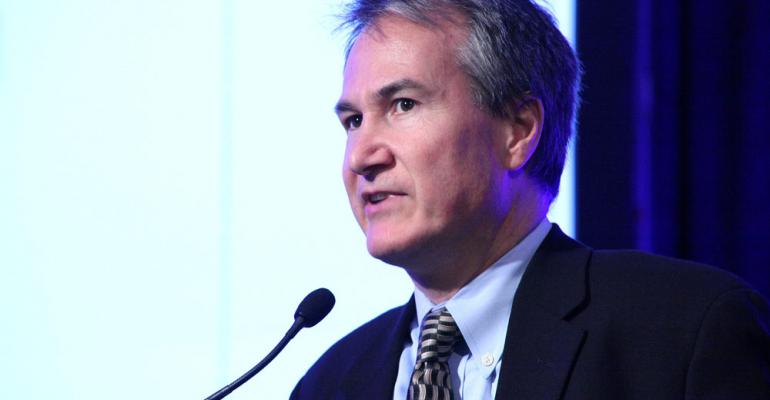TRAVERSE CITY, MI – Smartphones may someday contain alert systems designed to prevent pedestrian accidents.
That’s something Chris Borroni-Bird is working on as vice president-strategic development for Qualcomm Technologies. Another project he is overseeing is the wireless charging of electric vehicles.
He discusses both of his advanced-technology efforts at the CAR Management Briefing Seminars here. His company responsibility is to develop and implement transportation visions around wireless technologies.
Qualcomm, a provider of smartphone Wi-Fi and processing technologies, sees opportunities in expanded functions for the omnipresent mobile devices.
That includes making smartphones personal pedestrian-safety devices by equipping them with warning systems that would alert people if they were about to walk into the path of a moving vehicle or similarly put themselves in imminent danger as a pedestrian.
Such a warning system might use dedicated short-range communication and radio-frequency (RF) technologies, Borroni-Bird says.
Driver distraction involving use of mobile devices is a hot auto-safety topic today. Less discussed is pedestrian distraction tied to smartphone use. Pedestrian accidents account for about 12% of traffic fatalities.
Borroni-Bird envisions a system that would warn pedestrians in different ways, depending on how they use their smartphones at a particular time. For example, someone is texting would receive a screen warning. People listening to music would receive an audio alert if the system sensed they were about to do something perilous such as walk into oncoming traffic.
Developing such a warning system is not without challenges, Borroni-Bird says. “We don’t want RF to drain the smartphone’s small battery quickly, or people will shut off the function.”
Other concerns: “Will the smartphone transmissions cause channel congestions? And how do we find the sweet spot of not annoying people with false alarms?”
Qualcomm is developing a prototype, and “we think it has potential,” Borroni-Bird says.
The company also is looking at both the near- and long-term possibilities of wireless charging systems for EVs, he tells WardsAuto.
“Wireless EV charging has many advantages,” says Borroni-Bird, who formerly worked on EV programs for General Motors. “It removes the hassle of plugging in and encourages the adoption of EVs.”
Closer to reality is a setup that would allow EV owners to recharge their vehicles in their garages. Equipment would include a wall charge box and two current pads, one on the floor and the other affixed under the vehicle. Charging occurs when those pads become aligned as the driver pulls into the garage.
In the more distant future, Borroni-Bird, who holds a science doctorate degree from Cambridge University in the U.K., envisions a public network that would allow EVs to recharge on the fly.
A series of charging units would be embedded along roadways, allowing EVs to pick up power as they are in motion. “It would be like Wi-Fi hot spots,” he says. “You charge a little, often and everywhere.”
Constant charging like that in small increments would eliminate the need for hours of overnight charging and allows auto makers to downsize EV batteries. Challenges include making sure the system is safe, adapts to vehicle variations and doesn’t interfere with other systems.
A potential obstacle of a different kind is that few consumers are buying EVs. That’s not expected to change by the end of the decade, Mike Omotoso, LMC Automotive’s senior manager-global powertrain forecasting, tells WardsAuto.
Borroni-Bird’s futuristic ideas epitomize “out-of-the-box thinking” says Richard Wallace, the Center for Automotive Research’s director-transportation systems analysis.





